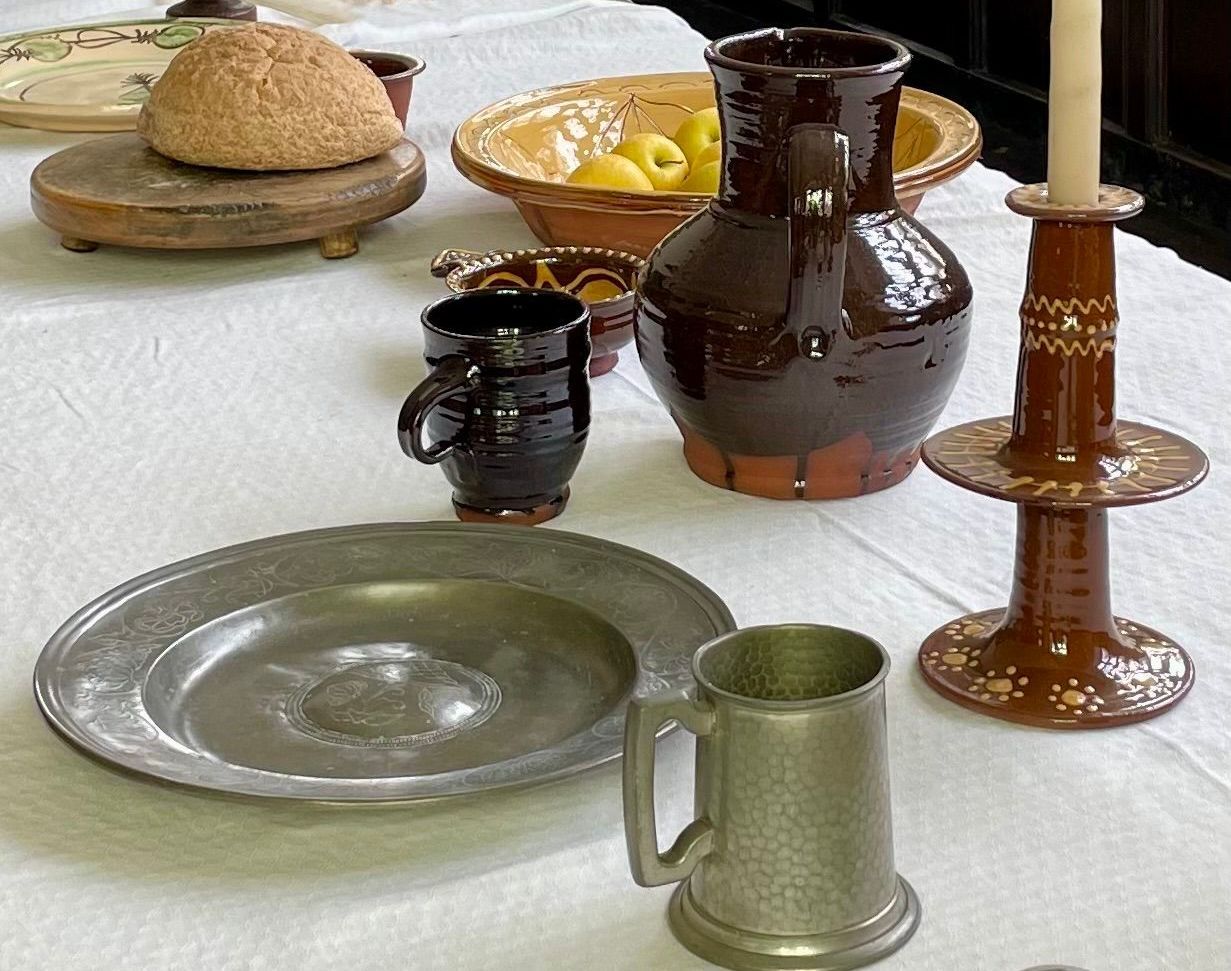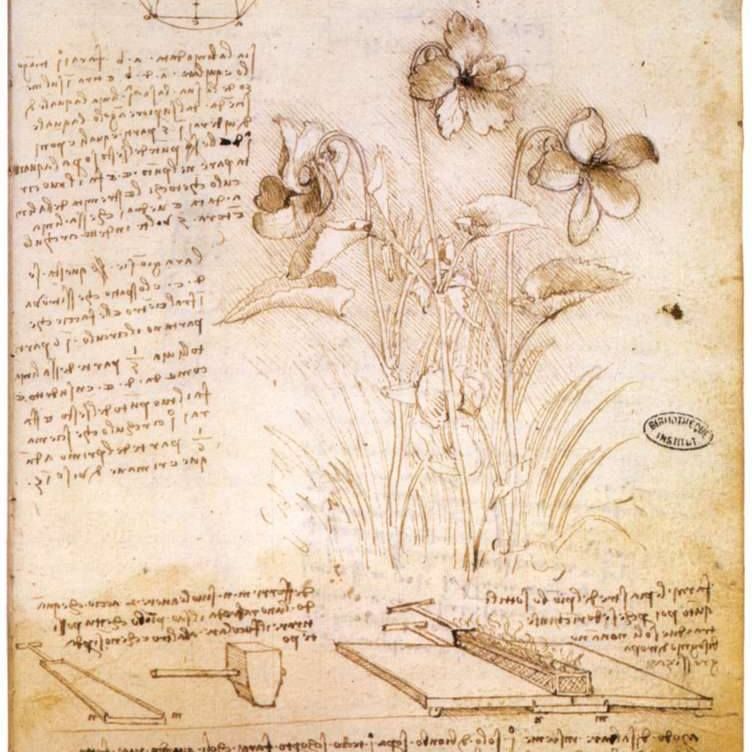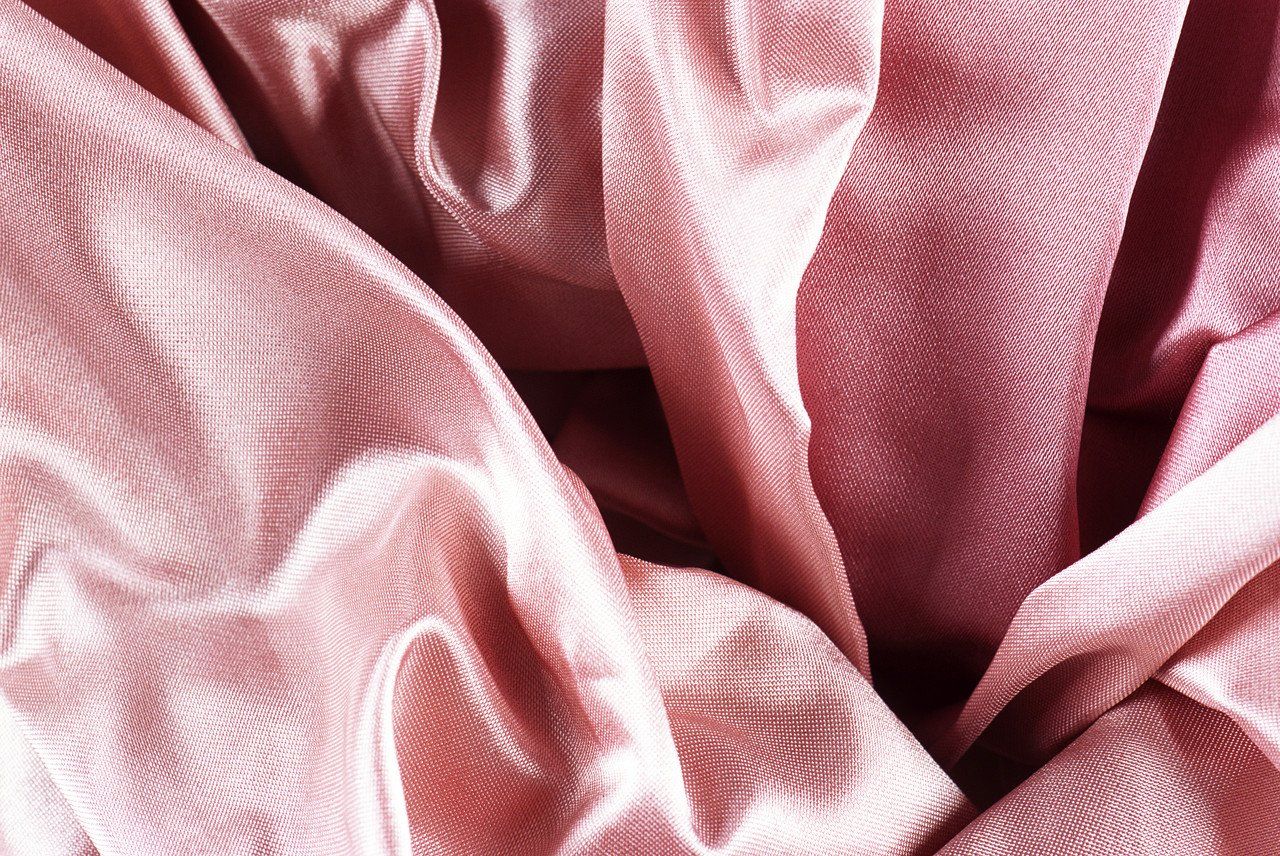Quenching your thirst in the Tudor era
Dionne Haynes • 2 June 2023
Ale, Cider & Perry

We are enjoying warm weather here in Britain, and one might be forgiven for seeking refreshment from a chilled glass or two of ale. But did you know that the average Tudor peasant consumed 8 pints of ale per day? Don’t let that fool you into thinking they were a bunch of rowdy drunks, though, because Tudor ale was weaker than most ale consumed in these modern times.
In the Tudor era, well water was unsuitable for human consumption, but it was safe to drink ale. The boiling of the water and the alcohol content killed harmful bacteria and created a drink that some Tudors described as tasting like “liquid bread”.
Elderly Tudors, pregnant women and even young children all quenched their thirsts with ale, but they drank a watered-down version known as “small ale”. Small ale had a lower alcohol content than the regular ale, and despite its bitter taste, it was a suitable drink for the more vulnerable Tudors and those preparing to start their working day.
In the years when harvests were plentiful, other drinks were common too, including cider made from apples and perry from fermented pears.
Cheers! 🍻

A library is a wonderful place simply because it houses a vast collection of books, but the New York Public Library has many other special items to boast about in the display cabinets of the Polonsky Exhibition. With exhibits ranging from the Gutenberg Bible to miniature books and a section of a musical manuscript by Mozart, there is much to linger over and enthuse about. One of my favourite exhibits is the family of stuffed toys that inspired the cuddly creatures of Hundred Acre Wood. The lovely bear from the Harrods department store was a gift for Christopher Robin Milne on the occasion of his first birthday. Christopher Robin named his bear Edward, but changed the name to Winnie after several visits to see a Canadian black bear named Winnie at London Zoo. A friend had a pet swan named Pooh which inspired the bear's change of name to Winnie-the-Pooh. The bear gained worldwide fame from the tales and poems A.A. Milne wrote about him and his adorable stuffed toy companions: Piglet, Tigger, Eeyore, Kanga and Roo. Little Roo lost his way in an apple orchard in the 1930s, never to be seen again, but the other toys travelled to the United States in 1947, and have remained there ever since. Milne’s American publisher donated them to the Library in 1987. It's always fascinating to discover the inspirations behind authors' tales, and it's especially thrilling to be able to stand so close and admire them in all their glory!

Amelia Earhart was an American aviation pioneer. As a child, she was considered a tomboy because of her spirit of adventure and pursuits that included climbing trees and hunting rats with a rifle. She also played basketball and took an auto repair course. With the help of her uncle, Amelia built a ramp (inspired by a roller coaster she had seen in St Louis) and secured it to the top of the toolshed. This was the "runway" for her first “flight” in a box that served as a sled. With several bruises and a torn dress, Amelia climbed out of the box and announced, 'It’s just like flying!' After a 10-minute experience flight at an aerial meet in Long beach, California, Amelia was hooked. She worked a variety of jobs to pay for flying lessons and earned her pilot’s licence in 1923. After that, this remarkable woman set several aviation records. She was the first woman to fly at an altitude above 14,000 feet, and in 1928, she left Newfoundland to become the first woman to fly across the Atlantic Ocean. She was a passenger for this flight and Wilmer Stultz was the pilot. Amelia was the first woman to fly solo across the Atlantic, and she was the first woman to fly nonstop across the United States. In 1930, she set a record for flying speed, reaching 184mph and breaking the previous record of 156mph. In June 1937, Amelia Earhart took off from Oakland California with her navigator, Fred Noonan. Their intention was to fly around the world heading in an eastbound direction to make Amelia the first pilot to circumnavigate the globe. They reached Lae, New Guinea, on June 29th, having flown 22,000 miles. They had 7,000 miles remaining to complete the mission. Amelia and Fred left Lae on July 2nd, heading for the next refuelling stop at Howland Island. They were never seen again. No one knows what disaster befell them. Did they crash into the Pacific Ocean and perish? Did they survive a crash and make it to land, only to perish as castaways? The disappearance of Amelia Earhart and her navigator remains one of the great unsolved mysteries of all time, but she remains the best-known female aviator in the world.

Leonardo da Vinci was a genius from the renaissance period. He was born in Italy on the 15th April, 1452. An artist and inventor, Leonardo had a great fascination for nature and animals. He is famous for painting the Mona Lisa and The Last Supper, and for inventing a flying machine. He had a thirst for knowledge, but did you know that this gifted man did not go to school? Leonardo learned to read and write, and was educated to an elementary level of mathematics, but it was by observing his Tuscan countryside that Leonardo learned about the natural world. On the 8th of July, 2021, a drawing by Leonardo da Vinci sold at auction for £8.8 million ($12.1m). The image of a bear’s head is tiny at 7cm x 7cm, and dates back to the early 1480s! The drawing was created using silverpoint, a tricky technique that involves pressing a silver stick to paper with a delicate touch. This was not the first time this little gem sold at auction. Sir Thomas Lawrence sold the same drawing at Christie’s in 1860 for the princely sum of £2.50! This talented man was a painter, sculptor, architect and engineer. He created many technical sketches, including designs for pumps, mechanical apparatus and military weapons, and he produced many detailed anatomical drawings after careful study of the human form - and dissecting human corpses. Here’s another fascinating fact - Leonardo da Vinci wrote backwards. This wasn’t to encrypt his notes, but to avoid smudging his writing and ruining his journals because he was left-handed. King Francis I King Francis I was a great admirer of Leonardo da Vinci’s talent. He named him “Premier Painter and Engineer and Architect of the King” and offered him the use of the Château of Clos Lucé, in Amboise, Loire Valley. Leonardo spent the final 3 years of his life at this beautiful château, working on projects for the king, and surrounded by eager students.

It's Publication Day for Mistress of Carrick , a Tudor tale set in the Cornish village of St Mawes. If you haven't read Mawde of Roseland , you can still enjoy this novel as a standalone tale. Here is the book description: A woman who must atone for her past. A village that needs her courage. CORNWALL, 1537. Mawde Sherman returns to the village of St Mawes to find it is not the thriving community she left behind as a child. The fishing fleet has dwindled and poverty is rife. When the local priory closes, the villagers despair. They lose a source of charity and many lose paid work. Mawde wants to help the villagers, and her husband has a plan. But Mawde discovers a dark side to Nicholas and a selfish desire for wealth. Plagued by nightmares about her past, Mawde must make amends. She believes God will forgive her if she helps St Mawes to thrive again. When a foe from Mawde’s childhood moves into the village, her emotions are conflicted. He is a cruel reminder of her past. He is also a man who can help her. Small acts of charity are not enough to secure the village’s future. The long-term solutions involve great risks, but is Mawde prepared to take them? A gripping tale about hardship, determination and love set during the reign of King Henry VIII. This book is available in ebook, paperback and hardback formats. It's also available in Kindle Unlimited for the next 3 months. Click here for purchase options. If you haven't read Mawde of Roseland and might like to read that novel first, click here to learn more about the first instalment of Mawde's story.

In 1990, a gang of criminals pulled off the biggest art heist in history. Two men dressed as police officers walked into a museum in Boston at 1.24 a.m. and overpowered two night security guards. They duct-taped the guards to a pipe and a workbench in the museum's basement and announced, “Gentlemen, this is a robbery.” In the space of just one hour, they removed 13 valuable artworks that would be worth $500 million in today’s money. Despite the offer of a huge reward, the stolen paintings were never recovered. They included works by Rembrandt (see the photo of his missing painting "The Storm on the Sea of Galilee"), Vermeer, Degas and Manet, but for some reason, the robbers made no attempt to steal the most valuable work in the museum: a painting by Titian hanging in a gallery on the third floor of the building. The museum still has the empty frames hanging on the walls as an eery reminder of the unsolved crime. Thirty-four years later, the FBI investigation is ongoing. If you have any information leading to the recovery and return of the stolen paintings, there’s a $10 million reward on offer...

Shrove Tuesday will soon be here and many of us will enjoy a traditional pancake or two! Pancakes were popular in the Tudor era too, but they were a little different from the ones we enjoy now. Modern pancakes are made from a basic mixture of flour, eggs and milk whisked together, perhaps with a little oil and a pinch of salt. Whisking makes a smooth batter, which is then fried to create one pancake at a time. I prefer my pancakes served with a light sprinkling of sugar and a generous squeeze of lemon. You might like yours with fruit and ice cream or even a savoury filling. Tudor pancakes were made with thick cream instead of milk, 2 or 3 spoonfuls of ale, cinnamon and ginger. They were baked in a pan over a low heat, turned and baked again until the mixture was as dry as it could be without burning. Adding ale and using cream resulted from Shrovetide marking the end of the Seasonal celebrations that started with Christmas. Lent followed, therefore Shrove Tuesday was an important day for using up dairy products before fasting. 31 January 2024

These days, there is little seasonality for our food. Modern growing techniques and the ease of international transportation mean that we can purchase most ingredients every month of the year, such as asparagus in winter or almonds in spring. They usually don’t taste as good as something grown locally and freshly picked, but they are available. For the Tudors, the seasons dictated what was on their trenchers and plates. Tudor housewives spent much of the summer drying, salting, pickling and preserving foods, and filling their store cupboards in anticipation of the winter months when fresh produce would be in short supply. By spring, their palates would be tired of dried and salted foods and they would be eager to eat fresh food again. Poor autumn harvests would have left the Tudors desperate during the winter. Poor wheat yields left grain stored empty, pushing up the availability and price of flour and bread. Torrential downpours in August and September would have turned fruit to mushy rot on trees, leaving little to dry or preserve. Coastal folk might have considered themselves more fortunate - they were able to eat catch fish or forage on the beach for winkles, cockles, limpets and shrimps. But the average Tudor relied on the weather for a good harvest. Putting food on the table was no mean feat. The arrival of spring put colour on trenchers with delightful recipes such as tarts made with marigolds, primroses or cowslips. Or how about salmon with violets, and whiting with green herb sauce, followed by a delicious cheese tart? Summer was a time of abundance, especially for fruit. Strawberries and cherries were eaten fresh, while gooseberries and plums were cooked or used in tarts. Then, when autumn came around again, the food shifted once more from fresh to salted and preserved.

Unlike sausages, peas carried no social stigma in the Tudor era and graced the tables of rich and poor alike. Peas grew in fields and dried on the plants, and were used in thick stews such as pease pottage. Garden peas featured later in the Tudor period and had white flowers and large seeds, whereas the field peas had brightly coloured flowers and smaller pods. Physicians labelled peas as “gross, windy and hard to digest” but said they were kinder than beans to the stomachs of the affluent. Sausages graced the tables of medieval merchants or members of the better off lower classes, but English gentry declined to eat them until the early modern period (from about 1500 onwards). Sausages often featured in carnival-like celebrations but became symbols of sexual license, representing male sexuality and masculinity in general. Illustrations from the late 1500s show fat men brandishing sausages while a thin woman defends herself with a fish. The images capture the religious conflicts of the time between meat-eating Protestants and fasting Catholics at Lent. The first known use of the word “sausage” dates back to the middle of the 15th century to describe minced or ground meat mixed with spices and seasoning, formed into a patty or enclosed within a cylindrical skin. Grains or breadcrumbs might also be added as fillers. Sausages are popular all over the world, but did you know that an Akkadian cuneiform tablet from Mesopotamia records a version of a sausage from around 4,000 years ago?

No one knows what the Mayflower looked like! Mention the Mayflower today and most people will conjure an image of the Mayflower II docked in Plymouth Harbor, MA. But that ship is a “best guess” of how the original small cargo ship might have looked. In the 1950s, JWA Upham Ltd’s shipyard in Brixham, Devon, built the Mayflower II based on information supplied by American naval architect, William A. Baker. Baker undertook five years of research to determine the likely layout of the original ship. He used scant references made to the Mayflower in surviving Pilgrim documents (e.g. William Bradford’s writings and Edward Winslow’s journal known as Mourt’s Relation), images from paintings made in the seventeenth century, and written descriptions of other ships built at around the same time. Baker’s research formed the design plans for the magnificent Mayflower II . Despite the replica being a best educated guess, the Mayflower II has become a widely recognised depiction of the original Mayflower . The replica is also a popular tourist attraction at Plymouth Patuxet Museum in Massachusetts. It's time I booked a trip to the U.S.A. – I have a yearning to see that little ship!

“Thou shalt not wear silk!” Did you know that during the Tudor era, there were strict laws about what you could and could not wear? Your rank and social status dictated the standard of dress and quality of fabrics you might choose for your clothes. In 1509, a law was passed which stated that you may not wear silk if you’re below the rank of a knight’s son. This is something I have had to keep in mind whilst writing the sequel to Mawde of Roseland . It has been tempting, on occasions, to throw in the odd piece of silk, but fear not, I made it through without succumbing 😂. Breaching that so-called “Act against the wearing of Costly Apparel” attached a hefty punishment. Wearing silk unlawfully attracted 3 months’ imprisonment and a fine of £10 per day for each day of infringement. That might not sound a lot nowadays, but a Tudor tradesman took a whole year to earn that sum! Few lower ranking Tudors would have been able to afford the luxury of silk clothing, but for those who risked it, there is little evidence to suggest the rule was enforced. As a schoolgirl, I was chastised for wearing a skirt with too many pleats. I believe I had 3 when only one was permitted, or something like that. So, I can't help thinking that if I had been a Tudor who had saved enough pennies, I might have been tempted to sneak something luxurious into my wardrobe and push my luck with that rule...
